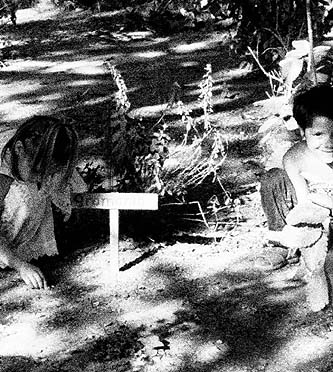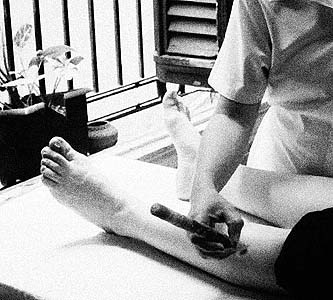Integrating the practice of traditional and natural medicine into the health system
The employment of Traditional and natural medicine in other countries
The cultural conditions for incorporating this programme are best in countries which have traditions of popular medicine. MTR centres can be most easily created in areas and regions that possess an abundance of medicinal plants, spa waters, minerals mud, and other resources used in TRM.
TRM can only be successfully incorporated into a health system if it is implemented by health workers and specialists of the highest standards and qualifications. Other, unqualified practitioners of TRM, such as herb salesmen, masseurs and medicine men, must also obtain qualifications. Then, once they are integrated into the system, they will acquire a sense of belonging and increase their standing in society. Validation of these practices by the nation's health system also avoids the occurrence of non-scientific practices.
The infrastructure needed for TRM is simple since in it is integrated into the practice of conventional medicine and the same facilities can be used. Any necessary adjustments to working areas and provision of resources are, in most cases, very simple and cheap. However, more expensive technologies do exist, but these can be acquired once available resources increase.
The implementation of strategies for the utilisation of TRM in the event of disasters, regular medical assistance in remote places, or where no health services exist, requires specific studies of the characteristics of the area concerned. In all cases, training of human resources and coordination between state and non-government organisations is vital.
The use of TRM can be an important source of new jobs at the local level in a variety of ways:
•Agriculture: sowing, harvesting, drying and storage of medicinal plants.
•Areas containing spa waters and mineral mud: processing these resources for medicine and therapy.
•Beekeepers and herb-salesmen.
•Local systems for the production of natural medicine (phytotherapy, apitherapy and spas).
•Information on, and distribution of, natural medicine.
•Local practitioners of acupressure and massage, under the direction of health workers.
•Doctors, dentists, nurses and paramedics.
•Civil defence personnel utilising TRM in disaster situations.
Depending on the specific conditions of each area, follow up strategies can involve any necessary epidemiological measures or the use of available resources, as far as possible compatibly with the traditions of the population. Immigrant communities representing other cultures within a nation can be involved in transmitting any medical traditions and treatments that have proved effective. This will evidently lead to the development of specific TRM procedures at the local level.
In transferring this experience to other countries, various strategies can be adopted according to the type of TRM concerned:
•Management of the production of natural medicine at local and industrial levels.
•Organisation of quality control systems for natural products.
•TRM management in primary and secondary health care.
•TRM management in the event of natural or man-made disasters.
•Creation of specialised TRM centres.
•Definition of pre-graduate and postgraduate study programmes in medicine, oral pathology and nursing.
•Definition of research and development projects in accordance with local needs.
•Community participation in the revival of traditional medicine through literature, art and culture.
•Health education through TRM.
•Definition of techno-economic parameters for spa design.
•Organisation of medical services in thermal spas.
•Management and protection of spa water and mineral mud deposits.
•Transference of technology for the medical application of mineral resources.
•Adaptation of thermal spas to the demands of commercialisation and international tourism.
DOWNLOAD THE BROCHURE PDF
english (1.1 MB)spanish (1.1 MB)
serbian (0.5 MB)
ONLY TEXT
•Traditional and Natural Medicine in practice
•The employment of Traditional and natural medicine in other countries








 COUNTRY OF ORIGIN
COUNTRY OF ORIGIN